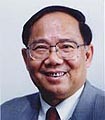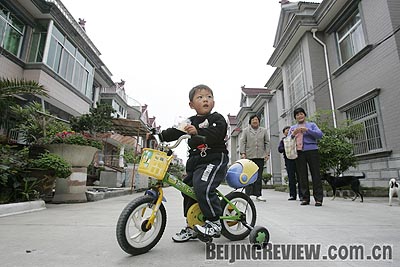|
China launched its urbanization program at the beginning of its reform and opening-up policy in 1978 in a bid to accommodate surplus rural labor and achieve sustainable development in rural areas. Three decades have passed. To get an in-depth understanding of China's urbanization, Beijing Review reporter Lan Xinzhen interviewed Lu Xueyi, a senior sociologist at the Chinese Academy of Social Sciences, about the progress during the last 30 years. Interview excerpts follow. and opening-up policy in 1978 in a bid to accommodate surplus rural labor and achieve sustainable development in rural areas. Three decades have passed. To get an in-depth understanding of China's urbanization, Beijing Review reporter Lan Xinzhen interviewed Lu Xueyi, a senior sociologist at the Chinese Academy of Social Sciences, about the progress during the last 30 years. Interview excerpts follow.
Beijing Review: What is the current status of the urbanization program?
Lu Xueyi: China's urbanization speed is running at a high gear. The number of small towns has risen to more than 18,000 from 2,700 in 1984. In 2007, about 45 out of every 100 people were urban residents, almost 2.5 times higher than the figure in 1958.
Why should China continue its urbanization activities?
There are three reasons. First, after rural reform in 1978, rural productivity was greatly increased, resulting in a large number of surplus rural laborers. The government proposed the strategic policy of transferring rural labor into non-agricultural sectors. From then on, the surplus laborers began to move into towns and cities.
Second, our country has vast market potential and persistent momentum. Urbanization has been a necessary condition for achieving sustainable development.
Third, after suffering the famine in the early 1960s, the government decided to build small towns to accommodate surplus rural laborers instead of allowing them to migrate to big cities. Therefore, if food shortages occur, those people can quickly move back and start production.
The primary goal for building small towns is to promote sustainable development. Each small town is built to absorb surplus rural laborers and ease the problem of too much manpower and too little land.
How did China's urbanization evolve?

STLYLISH TOWNS: Farmers from wealthy east coast regions like this one in Shanghai are satisfied with the towns in which they live
China's small towns have evolved from rural enterprises. The country's hukou (household registration) system is divided into two categories: rural hukou and urban hukou. Rural hukou holders used to be restricted to the majority of jobs in cities. Hence, farmers establishing enterprises in local areas became a must choice. Based on township enterprises, rural trade markets emerged. The government gradually loosened control over agricultural products, resumed market trade and allowed farmers to work in the cities. Traditional rural townships quickly developed afterwards. From the mid-1980s to the 1990s, the rapid development of rural enterprises had prompted a wave of small town construction.
| 